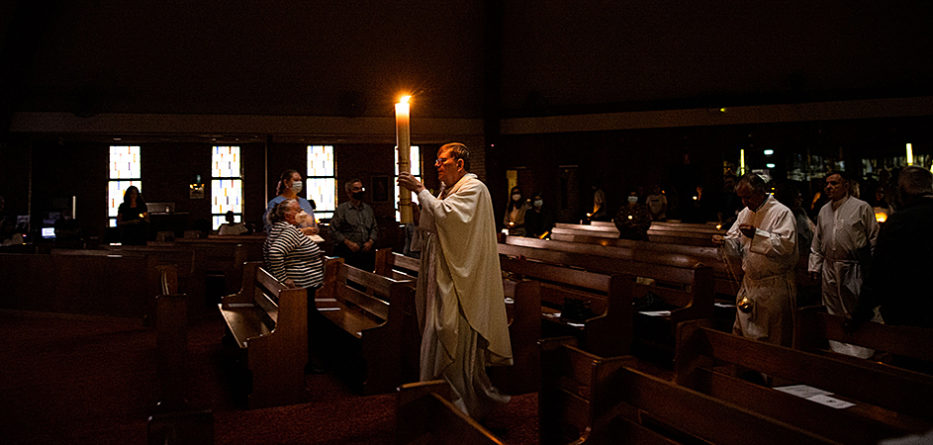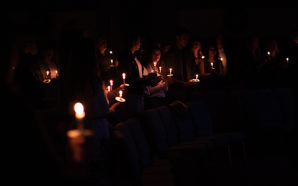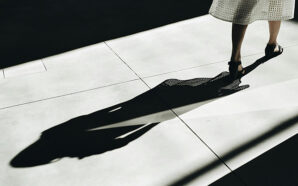Moving beyond the “Church of certainties” and embracing the Church of “chaos and order”
“The stupid need order; the genius masters chaos,” said Albert Einstein.
A sympathetic translation could be “while the majority need an ordered world, a genius is needed to master a chaotic one”.
The genius can see beyond the current chaotic circumstances by seeing the order in the chaos.
Chaos defines a leader.
Chaos is not new. There has never been a time of perfect order devoid of chaos in the human heart, politics, or the Church. Nowhere is a life lived without chaos of some kind or another.
Chaos is visited on people often unexpectedly.
Consider the people of Ukraine, where one day there is freedom, safety and prosperity and (literally) the next day there is warfare, violence, fear, subjugation and destitution. In the space of 24 hours, life goes from ordered to chaotic, and people move from being masters of their destiny to being pawns in it.
Where we encounter chaos, we also encounter finitude, the experience of being at the limit of our ability to control or even understand what is happening around us.
Chaos rips order from our lives, and we are left stumbling for meaning and searching for sense. In this situation, it is easy to feel that one is alone and God has “left the building”.
At this time, we often search for certainty and latch on to small certainties—like the light switch working—in the hope of regaining our foothold on the ultimate certainty that God still exists and that one’s life has not become a meaningless caricature of what went before.
When chaos strikes, we look for a new worldview. Usually, we build it on a division between two things that are opposed, a dichotomy. We strengthen the dichotomy with dualistic binaries like right or wrong, good or bad, secular or religious.
For the dichotomy to work, we must maintain an absolute division between our worldview and the opposing one. So, we contrast the spiritual, sacred world and person with the secular, profane world and person.
We treat these worlds as absolutely opposed to each other. We must because the opposition maintains our identity as a “religious” or “secular” person. We know we operate this way when we use the word “or”. People are in or out, good or bad, right or wrong.
The word “or” defines relationships when we have forgotten the word “and”. The word “and” helps us relate in non-binary ways: he is right and wrong; they are good and evil; they are inside and outside the family.
Consequently, it begins to dawn on us that we do not live in a world or a Church of complete order or absolute chaos; instead, we live in a world of chaos and order, in a Church of order and chaos.
From a Church of certainty to a Church of chaos
We once had a Church of certainties. It was a place where people went to know the truth and experience the infinitude of God. Magisterium, ritual, sacraments and priesthood were all parts of the structure of certainty that created holiness, goodness, moral certitude and eternal reward.
The minor chaos of one’s own life was taken up into the certainty of being in the presence of God by being in the Church.
God and Church were the known entities; deified, sacred, holy, undefiled, inerrant, offering a sacred language and symbols that could be repeated confidently because the Church told us this was so. Our confidence came from an organizational structure that kept us safe.
Then, the Church that promised it would never change, changed. For many, it changed “overnight”, taking away the assurances of faith and the prohibitions that framed and gave value to their faith expressions, piety, prayer, and most importantly, their sacrifices.
I remember interviewing people in 1996 for a book on the changes following Vatican II.
They had courageously given up meat on Fridays, fasted from midnight on Saturday, conceived more children than they wanted, gone to Mass every Sunday and Holy Day, obeyed the clergy out of a sense of fear, and lived in fear of damnation and sin that might keep them from their ultimate solace, the beatific vision.
I have vivid memories of my parents and their friends in the 1970s debating if they should attend the garden wedding of those who chose not to marry in the church building as distinct from those who chose not to marry in the Church.
The second could not be tolerated; the first begged more questions and discussion.
As time has evolved, these people now attend their grandchildren and great-grandchildren’s weddings outside the Church (in both senses) and do it with a certain sense of comfort.
They attend their gay grandchildren’s marriages and welcome the birth of their grandchildren conceived by in-vitro fertilization without—for the most part—a nod or a wink towards the Church’s teaching or prohibitions.
Many live as the “sole Catholic” in their non-church-going Catholic family, and an increasing number of them are buried by their baptized, non-church-going and non-church-interested children.
At their funerals, we see the gulf between what they would want and could “do” liturgically and what their children and grandchildren can “deliver”. It is a stark reminder that baptism has an anthropological dimension that is too easily forgotten.
At funerals, what the Church needs to “say” about death and what the family needs to “say” about it can lead to conflict where we encounter the distinction between capacity (understand the task) and capability (do the task).
We rightly presume that church-going people have both the capacity and the capability to worship liturgically, using the signs and symbols of the sacramental economy. However, this is not always true.
In the modern funeral, we encounter people for whom our presumption of capacity and capability is invalid, so we must adapt.
We need to find the “and” between what is understood about the task and the task itself.
While this might look like chaos, capacity and capability are related; we seek the relationship that gives meaning and voice to the meanings of death that the Church and the individuals (family) need to express.
Irrelevantism: God, teaching and teachers
Over time, God, the Church’s teachings and the teachers have become “irrelevant” for many in Catholicism’s Western Churches.
The geography of the irrelevancy of God, the teachings and the teachers is complex and related to many movements within Western Christianity, Western thought and social change. It is a crisis of belief in the message, the structure that underpins it and the messenger.
One recent correspondent, a church-going member of the parish, wrote in response to a homily that treated the Synod, the role of parishes and the general lack of participation in the synod process:
Just for the record, I did participate in a Synod group out of which we submitted our thoughts.
I was reluctant because I’m pretty much over the Catholic Church (specifically priests with their sense of entitlement and feeling drowned in the sea of patriarchy), and I do not believe the Synod will bring about any change; however, I contributed.
I would suggest that, like me, many fail to see the point of exercising energy on yet another think tank that will inevitably go nowhere.
The stiff introduction to the Synod felt unapproachable, and there was a sense of “warning” to the faithful not to sway onto topics that might conflict with the “direction” of the Holy Spirit. Condescending to say the least. We never felt liberated by the process, that’s for sure.
“Irrelvantism” goes much broader than the Church, and the Church is prey to it in wider secular society.
The roots of this in New Zealand are multiple, historical and complex.
They include the historical desire to liberate society and politics from the institutions of Western religion and, more recently, to retore indigenous pre-Christian ideas of God to their pre-colonial prominence.
The Western Enlightenment’s historical and social experience has changed western Catholicism and challenged the “Church of certainties”; dealing with this is a critical issue for contemporary Catholics.
From certainty to chaos and order
For many, the synodal process brings old and new grievances to the fore.
The grievances show we have more work to retain members, recruit them back, restore trust, and open new pathways. While some want a return to certainty, many more want to know how to live a life of faith—trusting in God—while living in a chaotic world and a chaotic Church.
The mother of the gay child wants to be able to attend her child’s wedding and go to Mass on Sunday and hear her decision affirmed. How does this happen without changing dogmatic positions?
The person who loves the 1962 missal wants to be able to go to Mass and experience the transcendence of God in the liturgy through silence and chant. How does this happen without having two competing liturgical rites and opposing theologies of the Church?
The new migrant Catholic wants to practice their cultural form of Catholicism in their new Church and see it taken seriously. How does this happen without them creating a safe, culturally defined religious community?
The antidote is to remember that nothing in this world is perfect; that no person is perfect; that you are not perfect! Instead, we are called to live a realistic Catholicism that is certain of God in the chaos of its human community and rejoices in a chaotic world in which God is present.
We, the Church, need to do this through a mature engagement with the world from a community of mature people who believe, live and pray in the “real world”; an authentic adult Church; the authentic sacramental conversation partner immersed in a chaotic world that is also God’s playground.
Where there is order in chaos, there is chaos in order! Embrace it!
J.P. Grayland is a presbyter of Palmerston North Catholic Diocese in New Zealand. His latest book is Liturgical Lockdown: Covid and the Absence of the Laity (Te Hepara Pai, 2021).
Reproduced with permission from La Croix International and J.P. Grayland.








